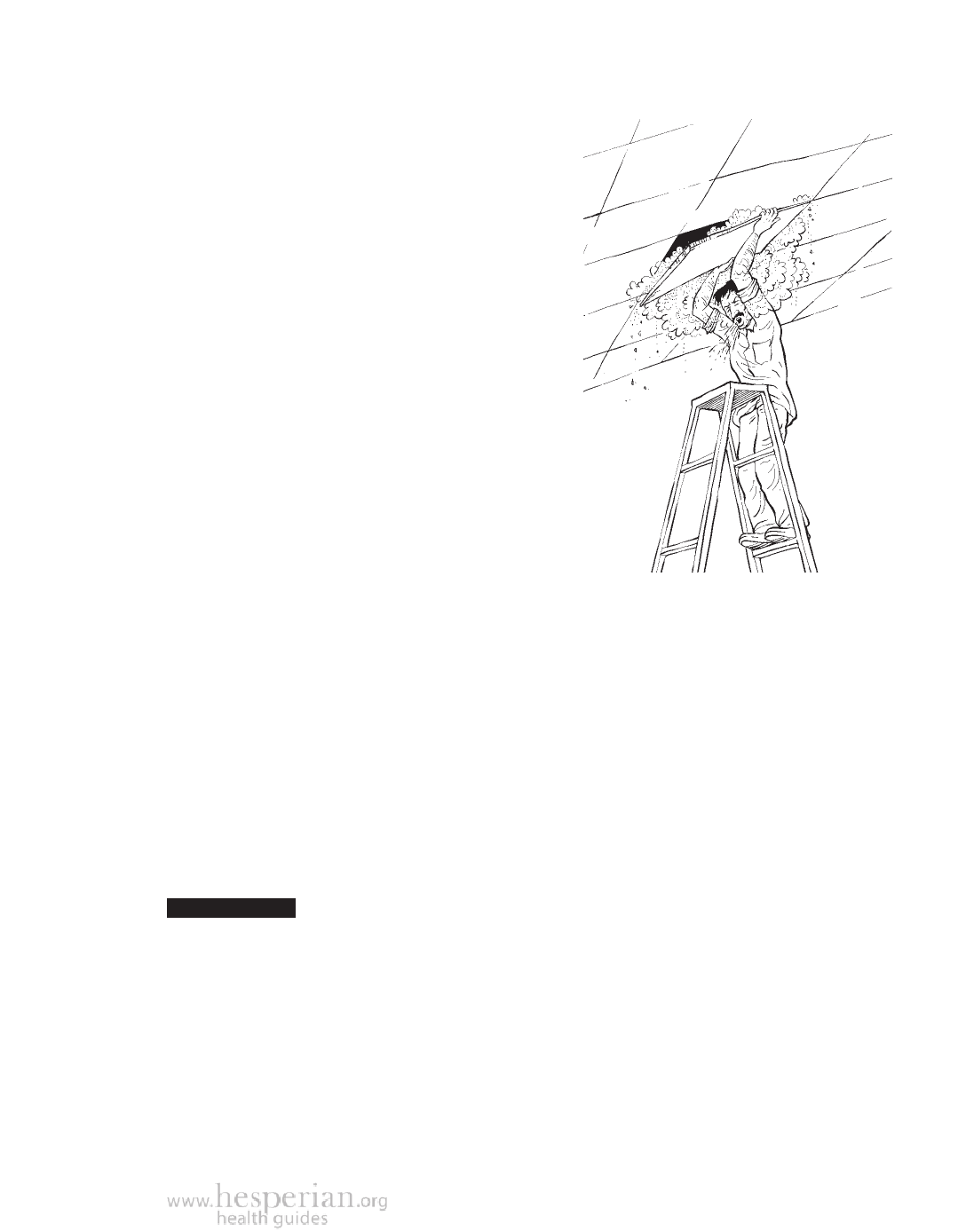
Toxics in the Home 371
Asbestos
Asbestos is a material that was once
commonly used for insulation and
fire-protection in buildings, paint, and in
some appliances (especially older ones) such
as toasters, ovens, broilers, and refrigerators.
Asbestos is made of tiny fibers that get into
the air and are easily breathed into the lungs
where they cut and scar the lung tissue,
causing permanent damage many years after
the fibers are breathed in. Because asbestos
is so dangerous, many governments no
longer allow it to be used in new buildings or
industrial products. But it remains in many
older ones.
Exposure to asbestos leads to asbestosis
(a disease that scars and damages the lungs),
and lung cancer. Early signs of these illnesses
are coughing, shortness of breath, chest pain,
weight loss, and weakness.
How are people exposed to asbestos?
When asbestos gets old, it begins to break down. If asbestos is used when a
house is built, but is sealed off and not touched or moved afterward, it does no
harm. When materials or appliances that have asbestos in them are moved or
taken apart, dangerous fibers are released into the air. This causes great harm
to anyone who breathes them. People who mine asbestos (see Chapter 21) also
have a high risk of asbestosis.
Prevention
Asbestos can be removed from buildings and building materials, but only at
great cost. Because removing asbestos can lead to exposure, it must be done by
people with proper training and protective equipment.
important: Do not try to remove asbestos without professional help and
proper protective equipment.
Treatment
Once asbestos is breathed into the lungs, it cannot be removed. It takes years
for signs of asbestosis or lung cancer to appear, and these diseases cannot be
reversed once they have started. Treatments can make a person have less pain,
but will not cure the disease.
A Community Guide to Environmental Health 2012